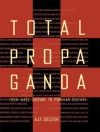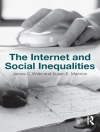In 2011, the U.S. poverty rate was 15.0% – 46.2 million persons were estimated as having income below the official poverty line. Neither the poverty rate nor the number of persons counted as poor differed statistically from a year earlier. Since 2006, when the poverty rate stood at 12.3%, marking its most recent low, the number of poor has grown by 9.7 million persons. The 46.2 million persons counted as poor in both 2011 and 2010 are the largest numbers counted in the measure’s r...
In 2011, the U.S. poverty rate was 15.0% – 46.2 million persons were estimated as having income below the official poverty line. Neither the poverty rate nor the number of persons counted as poor differed statistically from a year earlier. Since 2006, when the poverty rate stood at 12.3%, marking its most recent low, the number of poor has grown by 9.7 million persons. The 46.2 million persons counted as poor in both 2011 and 2010 are the largest numbers counted in the measure’s recorded history, which goes back as far as 1959. The 2011 poverty rate of 15.0%, statistically tied with the 2010 rate, is the highest seen in the past 18 years (1993). The increase in poverty since 2006 reflects the effects of the economic recession that began in December 2007. The level of poverty tends to follow the economic cycle quite closely, tending to rise when the economy is faltering and fall when the economy is in sustained growth. This most recent recession, which officially ended in June 2009, was the longest recorded (18 months) in the post-World War II period. Even as the economy recovers, poverty is expected to remain high, as poverty rates generally do not begin to fall until economic expansion is well underway. Given the depth and duration of the recession, and the projected slow recovery, it will likely take several years or more before poverty rates recede to their 2006 pre-recession level. This book examines poverty in the U.S. and the Supplemental Poverty Measure (SPM).












